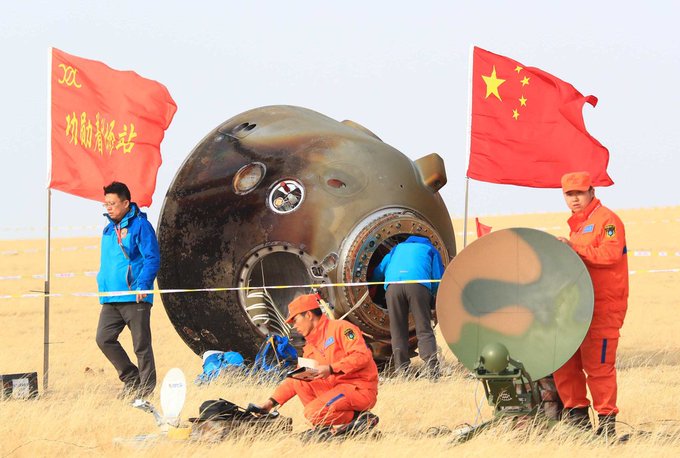China aims to build a scientific research station in the south polar region of the moon and realize manned lunar exploration mission in about ten years, said a senior space official on Wednesday.
Zhang Kejian, head of the China National Space Administration, made the remarks at the opening ceremony of China’s Space Day in Changsha, capital of central China’s Hunan Province.
China will launch the Chang’e-5 lunar probe to collect and return lunar samples back to Earth at the end of 2019, Zhang said.
Shaoshan, the hometown of China’s late leader Mao Zedong, will be one of the permanent storage centers of the lunar samples, Zhang said.
He also mentioned in his speech that China plans to launch its first probe to explore Mars in 2020.
China joined the space club on April 24, 1970, when the Long March-1 carrier rocket launched the country’s first satellite, Dongfanghong-1, into orbit.
Since 2016, China has set April 24 as the country’s Space Day. The various activities on Space Day have become a window for the Chinese public and the world to get a better understanding of China’s aerospace progress.
Details of China’s long-term lunar plans are still sketchy, but CSNA has made significant steps toward lunar exploration.
Earlier this year, the Chinese successfully landed the uncrewed Chang’e-4 on the far side of the moon, and have also placed astronauts aboard two temporary space stations, Tiangong-1 and Tiangong-2. Their space agency also plans to put a larger, more permanent station into orbit in the coming years.
The first parts of that permanent station will reach orbit aboard the country’s new Long March-5B rocket in the first half of 2020, Agence France-Presse (AFP) reported; the mission will not be associated with the International Space Station. The ISS is reaching the end of its operational lifetime, plus the United States and China do not cooperate on spaceflight endeavours.
Kejian also announced that Chang’e-5, an uncrewed lunar lander originally scheduled for launch in 2017, will attempt to reach the moon and return with samples in 2019,Xinhua reported.
China currently spends more on spaceflight than any country except the U.S., according to AFP. At the moment, the U.S. is unable to put humans in space without hitching a ride on a Russian rocket; plans to change that model by using for-profit rockets – such as those owned by SpaceX – have hit some snags. Still, American officials have also suggested that there are plans to return to the moon and stay on the planet for an extended period in the near future.
*With reports from livescience.com and Xinhua














